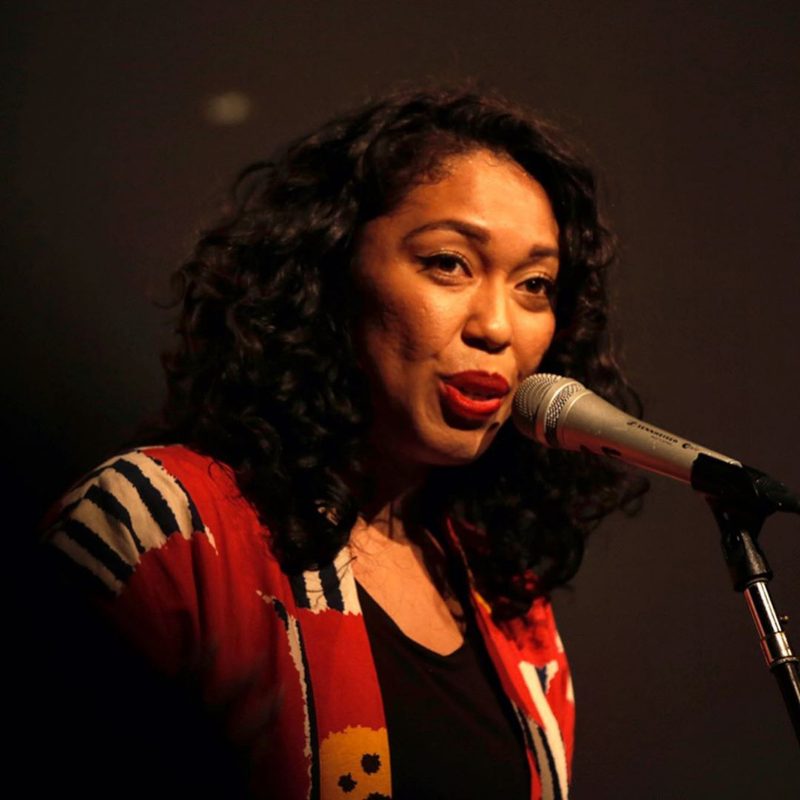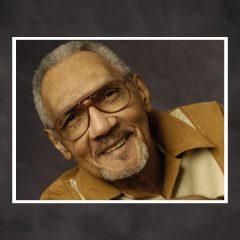
Find Your Breakbeat • Free It
by francxs gufan nan
On Friday, November 15, Aisha Fukushima performed a 30-minute set to a standing-room only audience at Asian Arts Initiative, as part of the 6th annual Hip Hop Showcase and the 2019 Philadelphia Asian American Film Festival.
Let’s talk about Aisha Fukushima’s voice.
Or, perhaps, we should begin with her breath. It’s the foundation of her sound—of her energetic, and energizing, performances—and of her philosophy that art and activism can and must intersect. In the chorus to one of her songs, she urges: “Don’t try to be / Just be. // Inhale, exhale / Breathe.” Aisha Fukushima’s breath supports her resonance.
But back to her sound. Whether she’s speaking or singing, Fukushima remains rooted in her vocal tessitura — her vocal range — and a rich, breath-supported timbre even when she breaks into a laugh.
Fukushima infuses each vowel and consonant with emotion using the full range of her vocal articulators: the corners of her mouth, her larynx, and a studied mix of her chest and head voice. Her breath control gives her voice the strength and flexibility to passagio — to transition between vocal registers — from a rich and warm lower register to a soft and smoky head voice.
In a 2018 performance, Fukushima shares, “I remember hearing my voice on a microphone for the first time in a recording session: And all of these fears and doubts, the things that folks told me I should be, or that I am and I am not, started to be conveyed on the microphone. The shakiness of it all, it all gets conveyed.”
Tonight, in an intimate 864 ft2 theater, she’s the opening act on a Friday, that risky time when the audience can still be stiff from their work days.
Fukushima, in another 2018 profile: “Art is a way of sensitizing, bringing people back to the core compassion that can get lost amidst the busy-ness of daily life.”
Bit by bit, Fukushima builds her rapport with the audience. When she asks, “How’s everyone doing?” — twice — she actually pauses long enough to really listen to the responses, as if to hear every one.
There’s no live band tonight. Instead, using a livelooper — a vocal effects gadget attached to her mic stand — Fukushima seamlessly blends layers of her voice into a polyphony of harmonies and percussive pitches.
She is just as comfortable crooning Arabic a cappella as she is beatboxing a baseline, as she is scatting a background melody, or rapping or doing spoken word. At once immersed in and pulled between these various sounds, folks in the audience start to smile, sway, and loosen up.
Between sets, as Fukushima shares her story little by little, she pauses to check-in again and again with the audience, asking, “Are y’all still with me?” or “How we all doing?”
“My mom and I were [two] of the only people of color in our neighborhood,” Fukushima shares in a 2018 interview, “When I would speak out to my classmates, […] somehow we were talking at each other and not with each other. I would write poems and raps and words about what I was going through and what was happening in our local community. And I remember my heart palpitating and reading a poem aloud called ‘Turn Off the Stereotypes.’ These words started to pour out of me.”
“When I started singing, all of a sudden everyone just took a breath… and there was a calm about the room… I could feel this kind of power that was mustered. And I also felt heard.”
You don’t need to know that Aisha Fukushima identifies as a RAPtivist, or rap activist. You don’t need to know that her global hip hop project, RAPtivism, has brought her to 20 countries and 4 continents. You don’t even need to know that her childhood — growing up between Seattle, WA, and Yokohama, Japan, behind the scenes of the music industry — was marked by microaggressions from peers and teachers alike. Her show only requires presence.
Fukushima throws her entire body into the performance, twisting and throwing back her hair, stepping, wingspreading. Even when a spate of technical difficulties threatens the rhythm of her set, Fukushima nimbly juggles the sound tech, the emotional energy of the room, and her own pep.
Behind her, the cover of her EP “Cypher” is projected onscreen. Why cypher? “In hip hop, we say ‘cypher’ [to mean] standing in a circle, getting down with some breakdancing moves, [coming] together as storytellers or MCs. […] It’s this liberatory space where we’re seeing and hearing each other on a more profound level,” Fukushima shares in a 2018 profile. “For folks who might be totally new to the creative process, I want to invite them into the cypher somehow.”
Gradually, she guides the audience through a carefully scaffolded series of actions: inhale, exhale, snap or clap the rhythm, and call and response.
The rapport she’s built comes to a head in “Love the Way We Rock.” After livelooping a beatboxed baseline and a harmony, she carries her microphone around the theater, gathering words from the audience then looping them into her background vocals: tonight, “peace,” “breath,” “family,” and “anarchy!” reverberate around the room.
By the end, folks are dancing in the aisles, laughing with each other, cheering and whooping. This is what Fukushima refers to as “finding your breakbeat.” In hip hop terms, breakbeats are “samples of percussion solos from funk or jazz recordings,” sequenced and repeated to form the backbone of newer music. Fukushima shares, “Often, it’s the most dance/movement-inspiring part of a song–the part that makes a person say ‘oh this is my favorite part—let’s get up and dance.’”
In a 2015 talk, Fukushima challenges each audience member: “Where is that space where you feel the most free? Where is that space where you can show off all your greatest moves and fulfill your greatness and not be afraid of it? Can you hear it?”
Aisha Fukushima’s performance embodies her core belief that storytelling can be the connective tissue to social justice. Her performance is a pause between unknowns. Through her breath, her audience breathes alongside her. And through collective breath, the entire room swells with the potential for new ways of being.
Bio
francxs gufan nan is halfway between 29 and 30. When not writing, they are a Youth Program Organizer at Asian Americans United in Philadelphia’s North Chinatown. They have five tattoos: their favorite is a red, topographic map of a mountain across their acromion, or left shouldertop.









